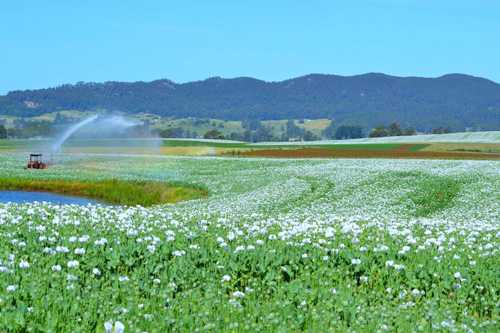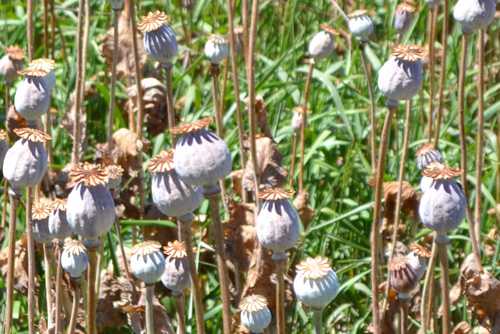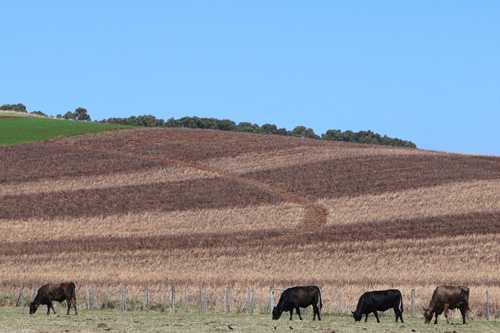Poppies in Australia are being stolen

What a pretty aspect, the sight of pale mauve-pink flowers spread across fields in the Tasmanian landscape in summer time. Driving off the Spirit of Tasmania, especially through December and into January, visitors marvel at the flush of colour, not uncommonly contrasted against large carpeted areas of white pyrethrum.
Poppies are grown in Tasmania to produce morphine, cocaine and thebaine – all highly effective painkillers. In fact, the island produces some 40 to 50% of the world’s legal morphine and around 90% of its thebaine needs. The production varies a little from year to year but provides an income of $80 – $120 million at the farm gate, a good return for a product used to ease a headache or back pain or frequently worse.
In the years following WWII, Britain was afraid morphine production capacity was near exhaustion. A safe and secure location, preferably in a friendly country with a stable government, brought Glaxo (now GlaxoSmithKlein) scientists to Australia. Trial crops did best in Tasmania. Isolated, safe, and with a climate that suited the often-temperamental poppy, it proved ideal for decent crops and high yields.
Substantial poppy crops grow right up to the edge of sometimes-busy roads and relatively close to population areas but, despite this, security remains acceptable. Police, farmers and even general public keep a good eye on paddock happenings. There are signs on fences declaring Prohibited Area, DANGER, KEEP OUT, Trespassers Prosecuted, but as ever they mean nothing to a person with other than good intent.
There remains a level of poppy theft. It isn’t great, with police estimating a loss of some 2500 heads per season (probably about six garbage bags full) out of 11,000 ha under cultivation. Three deaths have occurred in recent years, people boiling poppy heads to make a potent ‘tea’. Where they make a tragic mistake is in their inability to tell the difference between cocaine and thebaine varieties.
Thebaine is a painkiller many times more powerful and was once produced from an Indian poppy source. Scientists at Tasmanian Alkaloids (a subsidiary of Johnson & Johnson) selectively bred and developed a superior strain that is now the main source of opiates grown in the state. Pick cocaine poppies to prepare a pot of tea and you might live; pick the more common thebaine in error and you are likely to go to sleep for all time.
Despite an odd spoiler, there is no long-term problem. International regulation is strict and our little corner of the world still represents better, safer conditions than pretty well anywhere else. The only real danger to the unique stature of poppy growing in the Apple Isle is from other mainland states that want to horn in on the act. Crops are now being produced elsewhere but it remains to be seen how they manage in competition with a proven performer.
Ten paces at dawn…?
Notes on the three photos:

#1. A crop under irrigation at Barrington on the North West Coast, pictured on the last day of December. Note two other crops in the background.

#2. Part of the same crop exactly one month later, nearing harvest.

#3. Taken in a paddock at Northdown in mid-February, showing the ‘chenille’ effect after harvesting.








 Proudly Australian owned and operated
Proudly Australian owned and operated